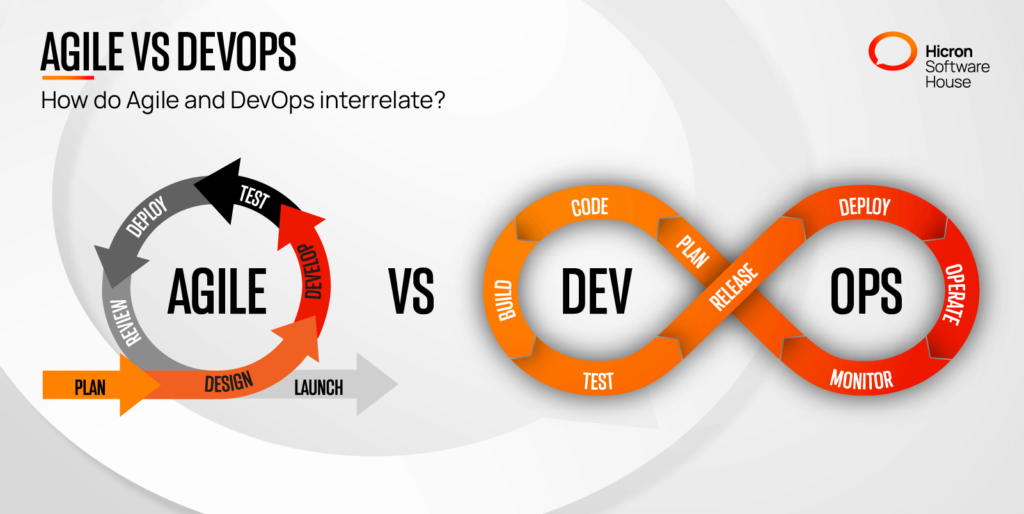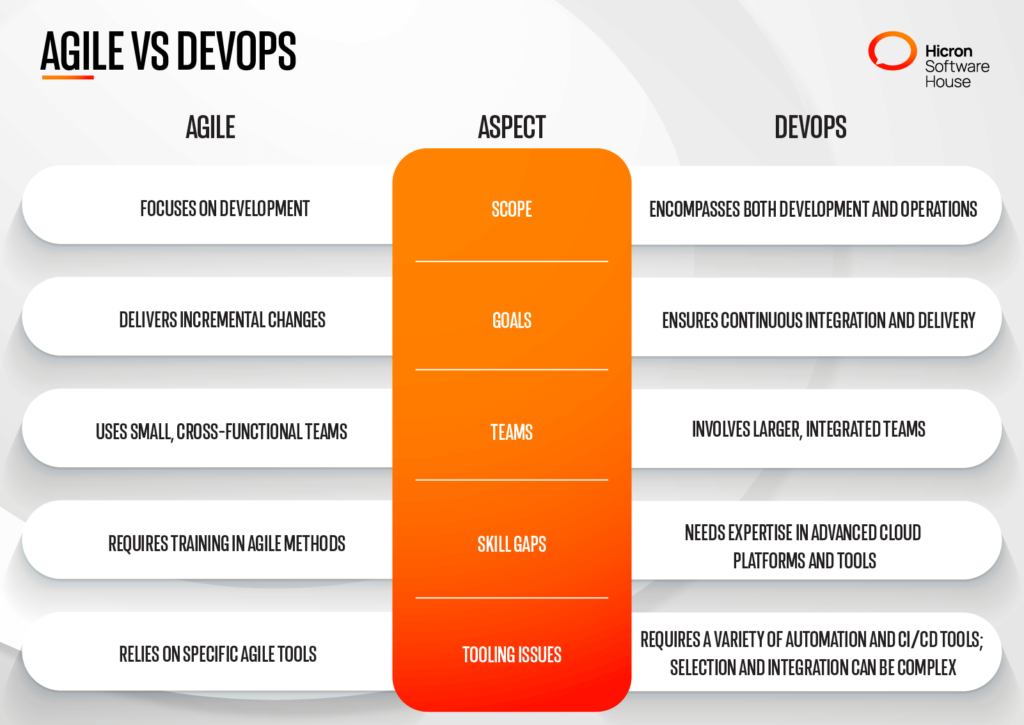The Power of DevOps Consulting: Transforming Software Development
- November 17
- 3 min

With technological advancements, IT businesses globally are growing at an unprecedented rate. This requires speeding up software development processes and quickly catering to evolving market demands. Two popular methodologies that help in this regard are Agile and DevOps.
DevOps combines software development (Dev) and IT operations (Ops) to shorten the development life cycle and continuously deliver high-quality software. It emphasizes collaboration, automation, and continuous integration and delivery.
Agile is a development methodology that focuses on iterative and incremental changes. It breaks projects into small, manageable parts called sprints, typically lasting from two weeks to a month. Agile aims to enhance team collaboration, gather customer feedback, and ensure quick, reliable releases.
These approaches enable you to deliver end products efficiently with minimal errors or bugs. However, despite their widespread usage and popularity, many organizations are confused about the scope and specific applications of Agile and DevOps methodologies.
Together, DevOps and Agile can transform software development by merging Agile’s iterative approach with DevOps’ automation and continuous delivery. This synergy enhances collaboration and accelerates the release of reliable software.
Key Differences between DevOps and Agile include:
Challenges in Integration:
To help clarify these concepts, we will discuss the differences between DevOps and Agile, their similarities, and their complementary nature. Let’s begin.
DevOps and Agile interact in various ways, including a shared focus on collaboration, communication, and continuous improvement.

Let’s discuss this in detail:
Continuous integration is indeed a major part of DevOps. However, it’s also used in Agile. DevOps, under an agile approach, uses both continuous integration and continuous delivery to optimize the overall product lifecycle.
For instance, agile ensures continuous improvement by promoting iterative development, regular feedback, and rapid response to change. On the other hand, DevOps focuses on automating and streamlining the deployment process to accelerate deployments and reduce time to market.
Together, they both work to enhance the software development pipeline, ensuring codes are deployed quickly and reliably. Some common tools for this are Jenkins, GitHub, and Circle CI.
Collaboration and communication are at the forefront of both DevOps and Agile, though both methodologies take different approaches to this.
For instance, DevOps encourages team collaboration by providing teams with a clear roadmap and hosting regular meetings involving all stakeholders.
On the other hand, Agile project management emphasizes collaboration through sprint reviews and daily stand-up meetings that keep everyone aligned and focused on the same business goals. This offers many benefits, such as:
Both DevOps and Agile promote team empowerment and autonomy. The former pushes DevOps teams to take ownership of their codes and IT products.
While the latter has self-organizing teams that have complete decision-making power and tackle tasks without any assistance. This leads to increased accountability, enhanced innovation, and greater job satisfaction.
It doesn’t matter if you are adopting DevOps or Agile for software development; they both prioritize the quality of final deployments. For example, DevOps employs automated testing that continuously checks the code for errors, ensuring a reliable and consistent output. On the other hand, Agile has individuals performing tests throughout each iteration, catching issues early and maintaining high-quality standards.
Another similarity between DevOps and Agile is the modular design. DevOps uses Git repositories to manage and maintain modular code components, allowing for easy version control, collaboration, and integration.
Contrarily, Agile employs reusable and modular design concepts. It breaks down projects into smaller, manageable pieces, enabling iterative development and continuous improvement.
To summarize, DevOps and Agile both aim to enhance software development efficiency and quality. Their interrelation lies in combining Agile’s iterative development with DevOps’ automation and continuous delivery. Both methodologies emphasize collaboration, communication, and continuous improvement, breaking down silos between teams and promoting cross-functional collaboration.
To integrate DevOps and Agile, you should follow best practices for automation, continuous feedback, employee training, and utilization of collaboration tools.
Automation of workflows is necessary to incorporate DevOps and Agile. Therefore, you should automate all the code scanning and getting procedures. This reduces the errors associated with manual checks and keeps your IT infrastructure far away from vulnerabilities.
Continuous feedback from team members and customers is crucial to successfully integrating DevOps and Agile. To collect feedback from team members and key stakeholders, you can arrange regular meetings where everyone openly discusses what worked well and what needs improvement. In addition, you can easily gather feedback from customers via surveys, user testing sessions, or direct interaction on various social media platforms. This feedback mechanism provides your team’s insights into software performance and identifies any bottlenecks.
Training and upskilling your team is also mandatory to integrate DevOps and Agile in your software delivery pipeline. Make sure that all team members perfectly understand the principles, processes, and tools associated with both methodologies. Provide them with workshops, courses, and certifications regarding DevOps and Agile. Also, a culture of knowledge sharing among team members should be promoted to create an environment of continuous learning.
Another best practice to follow to combine DevOps and Agile is to ensure proper development process alignment. To do this, you should start by defining clear project objectives. Then, create cross-functional teams that take care of your software development lifecycle from planning to execution. These teams work collaboratively, breaking down silos and aligning your project objectives with business goals to provide a clear direction for your DevOps and Agile initiatives.
It’s also important to choose the right collaboration tools to create an atmosphere of transparency and smooth workflow management. For example, you can pick Agile and DevOps tools like Jira, Slack, Microsoft Teams, and Atlassian Confluence. These tools can be used for Agile practices like creating user stories and sprints and for smooth collaboration between team members via chats and calls.
Integrating Agile and DevOps brings plenty of benefits; however, it also features some challenges. Reorganizing personnel and optimizing the IT environment may be difficult, which can reduce overall efficiency.
The integration of DevOps and Agile requires a significant restructuring of teams. Traditional development and operation teams must be merged into cross-functional units that work collaboratively throughout the entire software lifecycle. This demands a huge culture, all shifts, and you may face challenges, resistance to change, and the need for extensive training.
Agile and DevOps approaches to software development emphasize rapid iteration and frequent releases, which require highly flexible and responsive IT infrastructure. However, traditional IT environments often lack this much flexibility. This results in inefficiencies and bottlenecks that impact organizational progress.
Once set up, traditional development environments are difficult to modify. You cannot adapt to changing project requirements and fail to innovate. This brings hurdles in your journey to integrate DevOps and Agile, as both methodologies thrive on flexibility and the ability to make quick adjustments based on feedback and evolving needs.
Some other challenges are:
Agile and DevOps have plenty of differences in scope, focus, and teams involved.

Here’s a detailed explanation of each point to help you understand better:
The first and major difference between Agile and DevOps is their scope. DevOps is a broader approach encompassing software development and IT operations, while Agile focuses only on software development.
DevOps focuses on collaboration between operations and development teams to automate overall workflow. Its main features include automation, continuous integration, and delivery throughout the software development pipeline.
Agile, on the other hand, uses an incremental and iterative approach to development. It breaks down projects into small parts called sprints and also involves customer feedback to make changes before the final software delivery continuously.
DevOps involves large and multiple teams with different skill sets, evenly distributing tasks and creating a sense of shared responsibility, which leads to business success.
While Agile development has quite small teams compared to DevOps. The Agile team members in Agile methodology are specialized in various domains to achieve quick task execution with minimum issues.
Both DevOps and Agile are incredible at shaping the software development journey. Integrating them can allow you to enjoy quick deployments, enhanced testing, and version control that boost the quality of your codes. If you find managing and integrating both methodologies a hassle, trust Hicron Software.
We have a team of DevOps specialists who help you adopt DevOps with an Agile approach. Our experts take care of your IT products from inception to the final deployment, ensuring they are bug-free and reliable. Contact us today to streamline your development process and achieve faster and higher-quality software product delivery.
